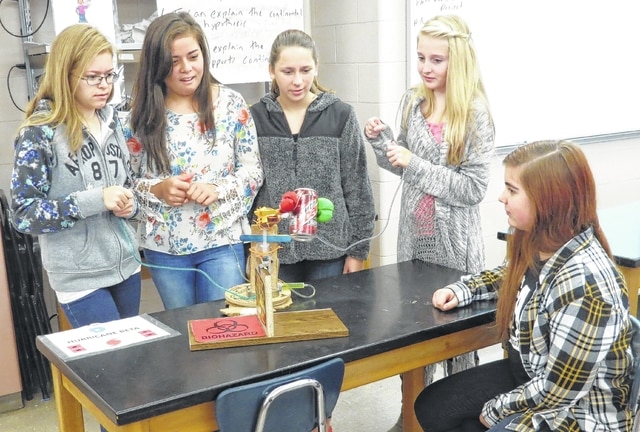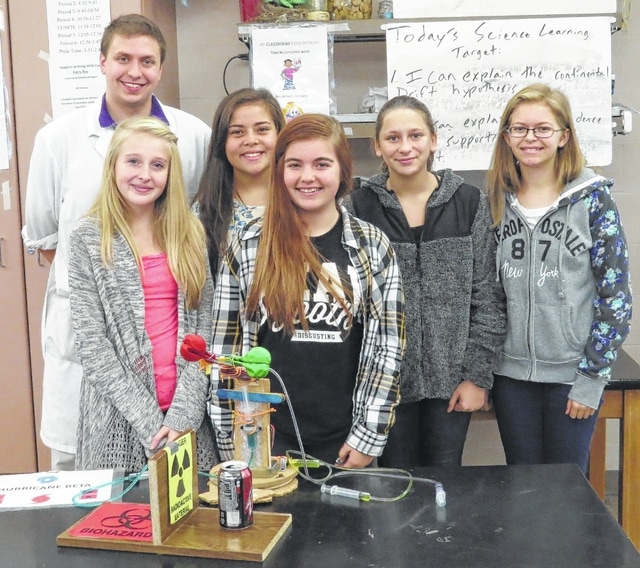

WILMINGTON — They sit together now as newly-found friends smiling and eager to talk about one of their most memorable science lessons to date. But that wasn’t the case a few weeks ago when Wilmington Middle School science teacher Dan Hellmund met with students and introduced the STEM project students would complete during PRIDE Time.
STEM stands for science, technology, engineering, and math and are fields deeply intertwined in the real world and in how students learn most effectively.
As Hellmund handed out the 10-page packet detailing the step-by-step process that would challenge students to create their own Engineering Design Process that if done correctly would construct a hydraulic arm, the students were nervous. Very nervous.
Madi Collner, Ashlee Griffith, Abby Kovacs, Quimbee Lane, and Paiton Walker admitted that at times they had butterflies in their stomachs as they studied the packet that outlined the process instructing them to “Define the Problem. Plan Solutions. Make a Model. Test the Model. Reflect and Redesign.” It seemed like a daunting task, but the group put their trust in Hellmund to guide them in the process, and the results were more than they could hope for.
While it may not look like the construction grade materials most commonly associated with a hydraulic arm, this group of eighth-grade girls constructed a prototype of a hydraulic arm capable of lifting and moving a “fuel rod” aluminum can from one side of a wall to another.
In an effort to prepare for the assignment and understand its significance in the real world, the group studied how the use of hydraulic arms were instrumental in 2011 in the cleanup of the rubble left after quake-tsunami disasters struck Japan.
The group then called upon their language arts skills and researched background and construction information that would help them better understand the direction their own planning would take. They viewed videos and discussed how and where to begin. They called upon their math and science skills as they diagrammed their plans, and slowly, their prototype began to take shape.
With construction underway, students used a combination of materials including balloons, Popsicle sticks, zip ties, wood, metal, tubes, syringes, color-coded water, and even a sprinkling of glitter here and there. They drafted blue prints, and used power tools, and after a series of test runs, adjustments, and fine tuning, the team felt confident in their work.
Confident that their hydraulic arm was constructively sound and more efficient than their classmates’, the group prepared to compete with four other teams that were equally confident. The final round of competition became a battle of the boys against the girls, and in the end, the girls were victorious with a run time of just 30 seconds — to lift the “fuel rod” can 6.5 inches, carry it over the wall .75 inches wide, and carefully set it on the opposite side.
When sitting together and talking about their accomplishments, the group was excited to have earned bragging rights for having won the competition, but they also realized that one of the most important aspects of the education process comes into play when students go beyond what they know, take risks, and investigate the unknown.
According to Hellmund, this was one of the most challenging assignments students have completed.
“The students stepped up and hit it out of the park,” said Hellmund. “I’m so proud of all of them for doing such a wonderful job.”
Information for this article was provided by Diana Miller, who coordinates communications for several area schools.



